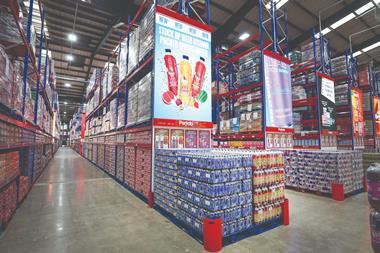
2022 was a difficult year. Though sales percentages were up almost across the board in the grocery sector, retailers spent the year battling rampant inflation, frequent supplier price increases, rising energy costs, and numerous other economic challenges.
Staff felt the same pressure, resulting in increasing wage demands and a tight job market. And customers felt the pinch deeply, meaning retailers were forced to fight, wherever possible, to prevent passing additional costs on to consumers.
While many hoped 2022 would be a temporary aberration and acted reactively to adapt, the picture now is perhaps even more bleak. 2023 will be more difficult. Hedged rates on energy prices will expire, causing suppliers’ costs (and, in turn, prices) to multiply – to the point where additional costs to retail can no longer be readily absorbed.
Those same price hikes will affect the cost of running stores, putting a significant strain on bricks and mortar operations. Pressure is increasing, and the valves holding back consumer price increases will have to be opened at perhaps the worst possible time.
The state of the market 2023-25
Customer confidence is deemed to be at its lowest level for 50 years [GfK]. Mortgage pressures, expected interest rate rises, and the surrounding cost of living crisis are not going away quickly. Even when interest rates and price hikes settle, confidence will take time to rise again. The sad truth is the current crisis will not end in 2023, or even 2024.
Retailers must look forward, making sacrifices and significant operational alterations that can take them to 2025 and beyond. If they remain reactive, and their focus is trained solely on firefighting, it’s likely some may not survive.
This is how the retail landscape will look for years to come, and it will reshape the marketplace. For every retailer, large and small, the next few years represent more than a temporary inconvenience. Restructuring to meet increasing demand is a necessity that requires long-term strategic change in every pillar of the business.
Retailers must buy better, tighten logistics and distribution, improve selling tactics and market positioning, make their ‘go to’ market strategy fit the new norms, and all while building systems which allow them to be as agile and flexible as conditions demand.
Strategic thinking
There is a reason those businesses that operate in line with a deep discount business model are experiencing significant growth, averaging over 20% growth per annum. This growth goes beyond consumer demand for lower prices.
The discount business model that helped these companies find a foothold in the UK market during the economic downturn of the early 2000s has been accompanied by a gradual, but persistent, investment in their ‘go to’ market strategy, adapting their model to excel in these exact market conditions, in both price and customer experience.
Over time – not, notably, overnight – these deep discounters have worked to offer a wider range of products, higher quality goods, and stronger service. Long-term strategy has put them in a unique position, enabling them to compete with large, major supermarkets without sacrificing the core model that made them successful in the first place.
The typical response to tightening margins is to reduce investment, which makes logical sense on the surface. But slashing wildly at resources is a short-term fix with long-term ramifications. A company cut down to its bare bones will lose its ability to fight, and may also lose its attractiveness to customers.
The key, instead, is to consider the way the market is changing and invest whatever it takes to position the business to be effective in this changing retail landscape. The loss of market share during 2022 and 2023 to the deep discounters is probably lost forever.
Change management
Consumers are typically switching downmarket, steering away from premium brands in favour of lower-cost alternatives. They are making more frequent shopping trips but filling smaller baskets, as fluctuating prices meet a lack of awareness of how much they will safely be able to spend. Investing capital in positive change is the correct course of action. Done right, strategic restructuring will quickly earn that capital back, and keep the business on track to best serve its customers’ changing needs.
A broad overview is essential, though proper change management involves launching focused individual projects aimed at generating different ROIs across all aspects of the business.
Knowing precisely how the business operates from top to bottom is the key to implementing process redesigns, discovering new optimisations and efficiencies, spotting current and future trends, and implementing analytics and automation technology which will increase competitive advantage.
So, the outlook is, to put it bluntly, grim. All retailers must now make difficult decisions, and enter this process of considered, strategic change or face dire consequences. But this is not a time for throwing out one’s business model in a panic. Rather, retailers need to become leaner and smarter through forecasting, planning and better execution.
It seems glib to call this an opportunity, but that’s exactly what it is: if this crisis can be the catalyst that causes the business to intelligently refocus, optimise, and enter 2025 ready for what could potentially be a significant economic upturn, retailers who take heed will be glad they invested today and throughout 2023.



















No comments yet